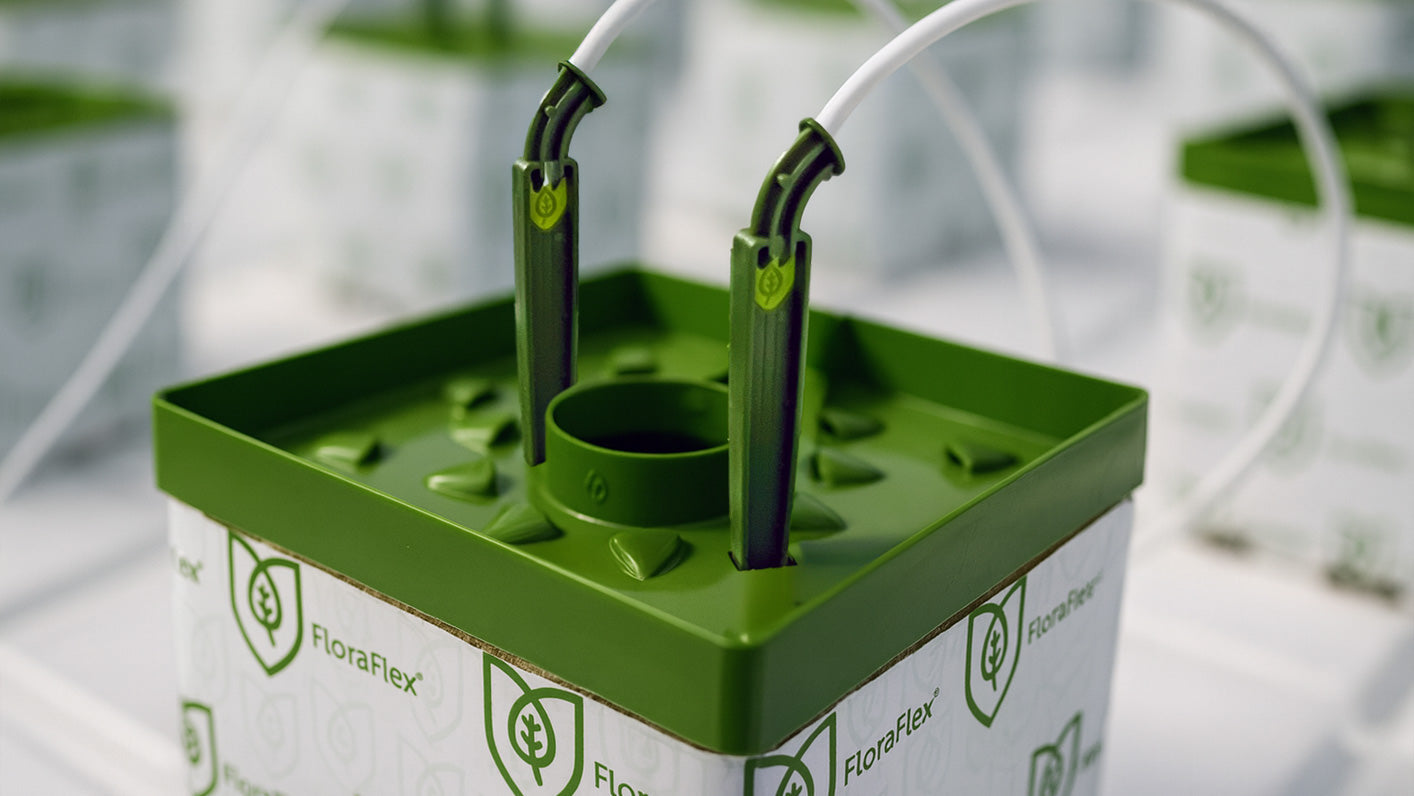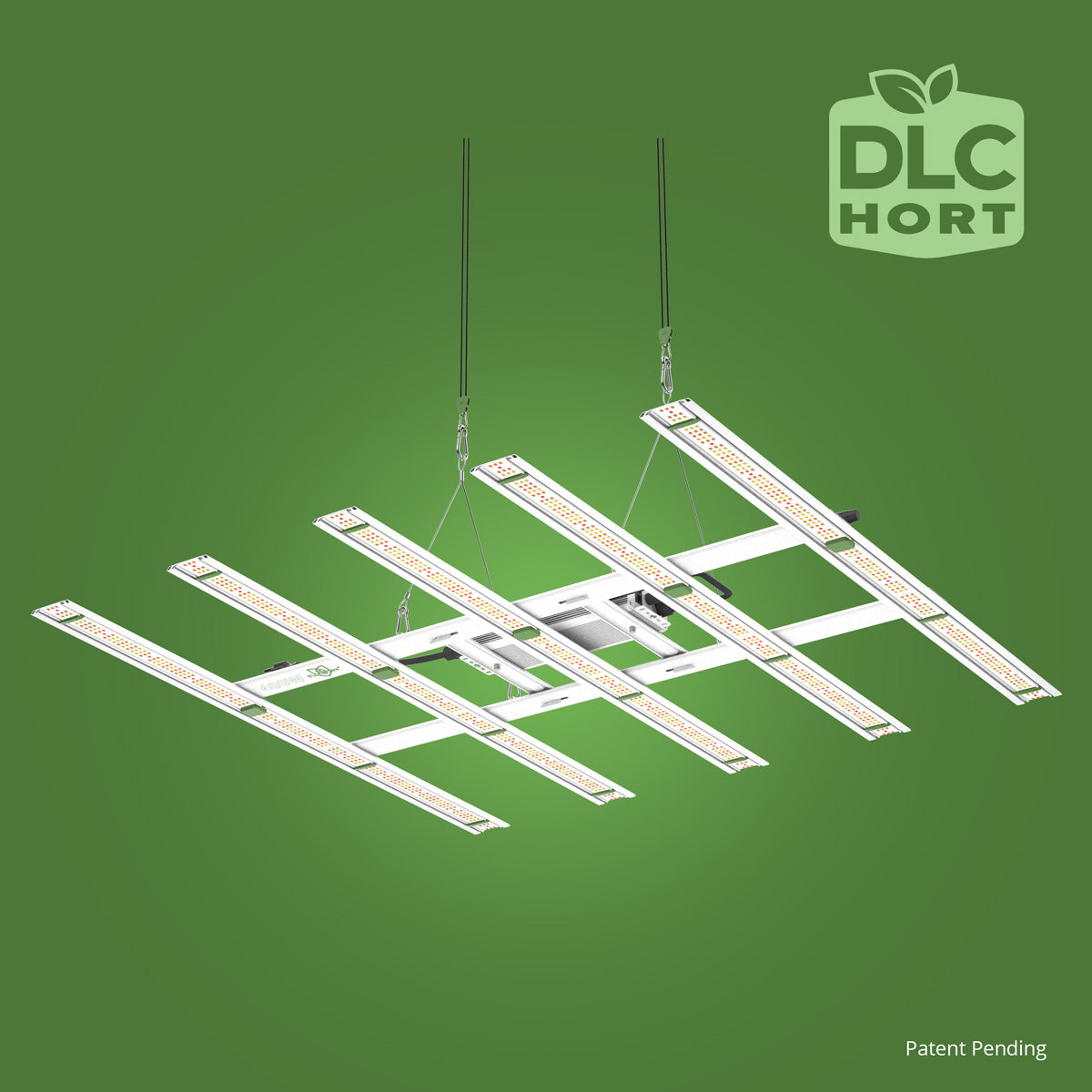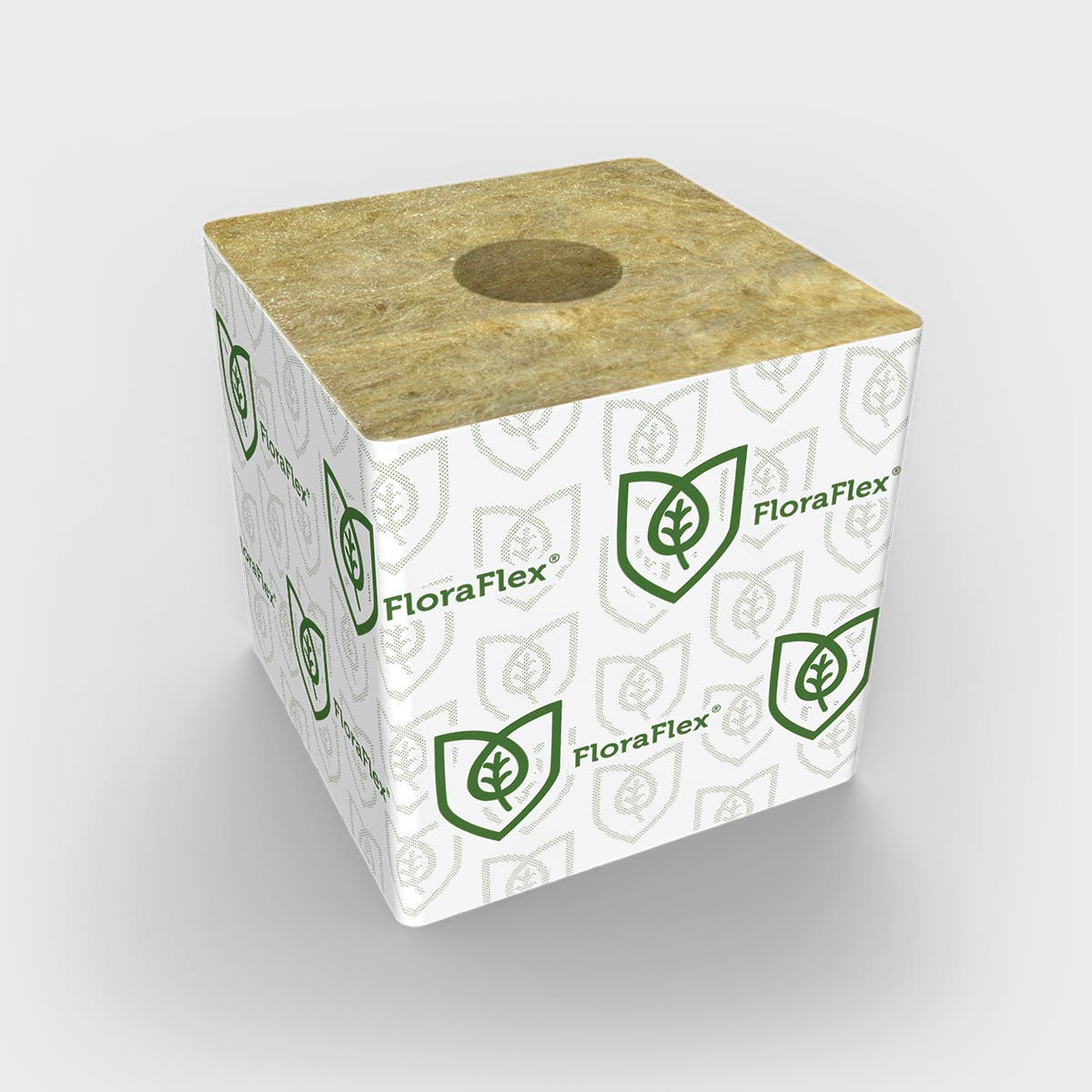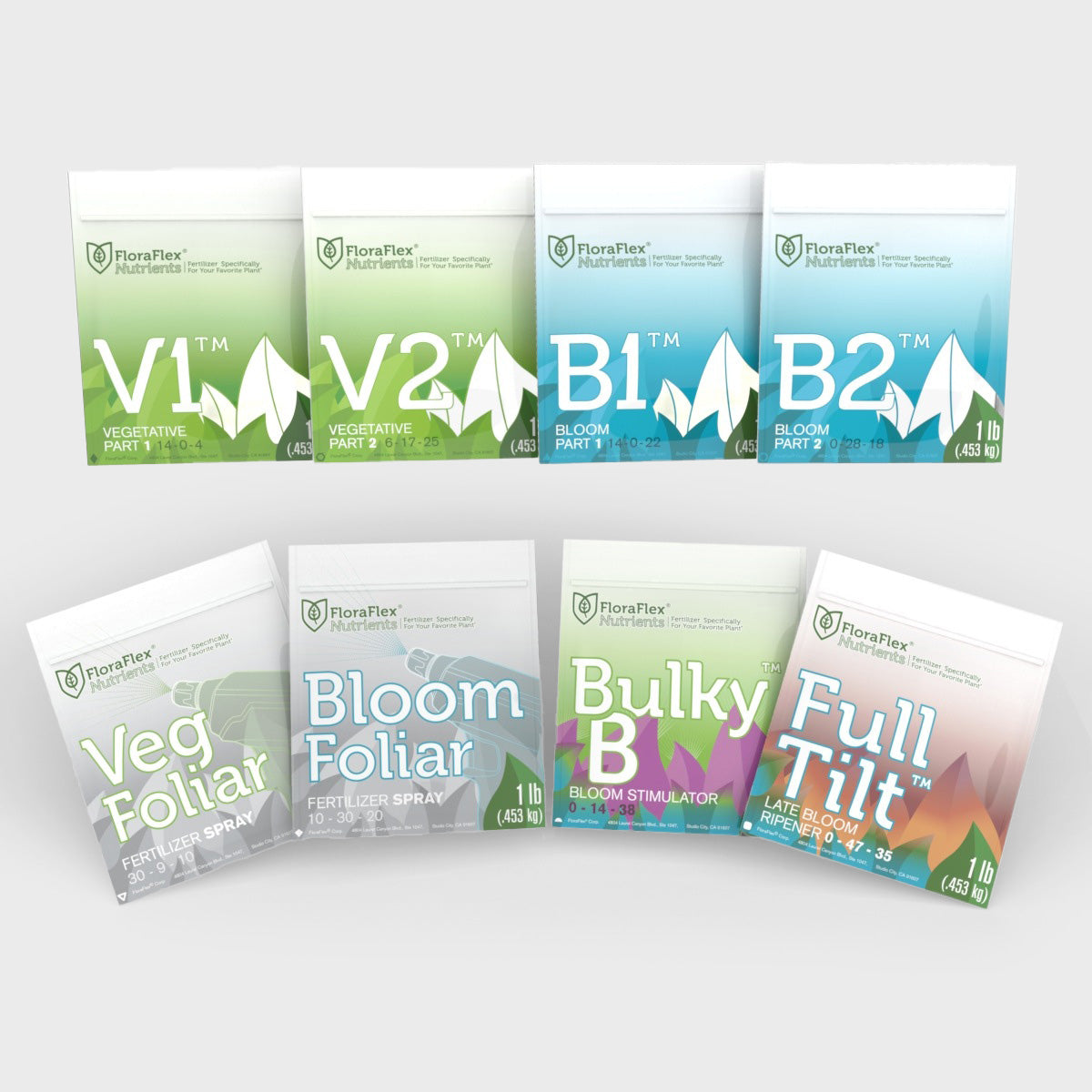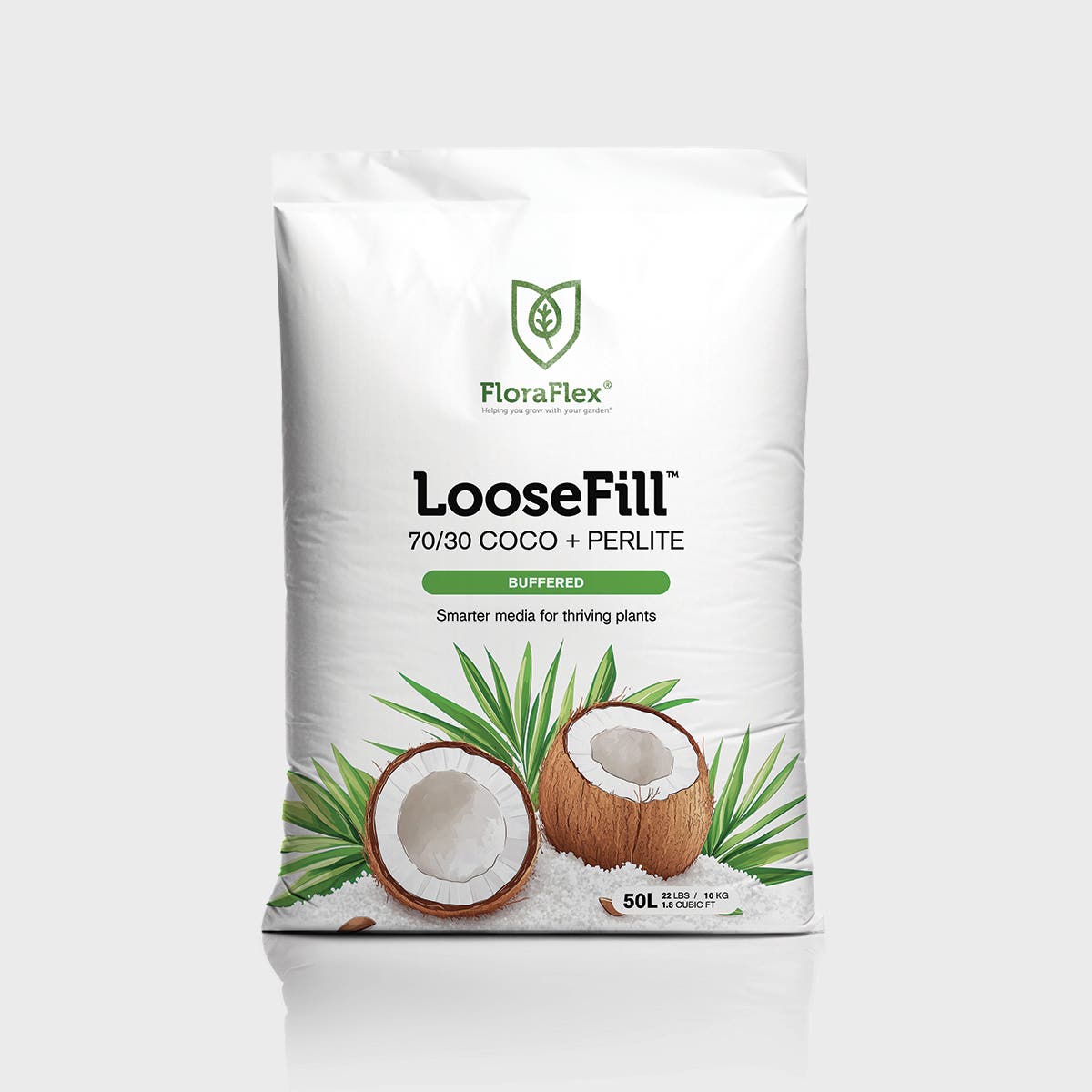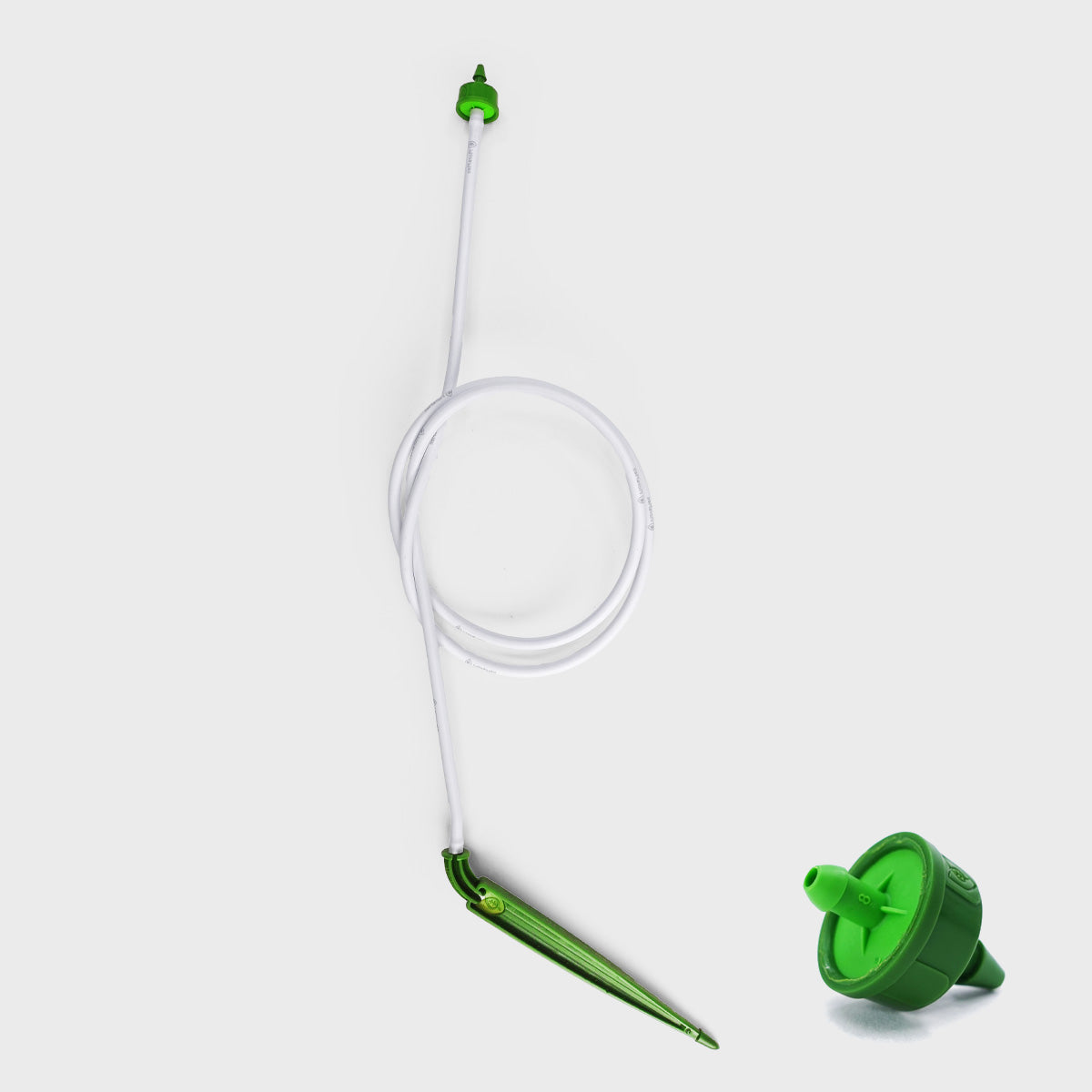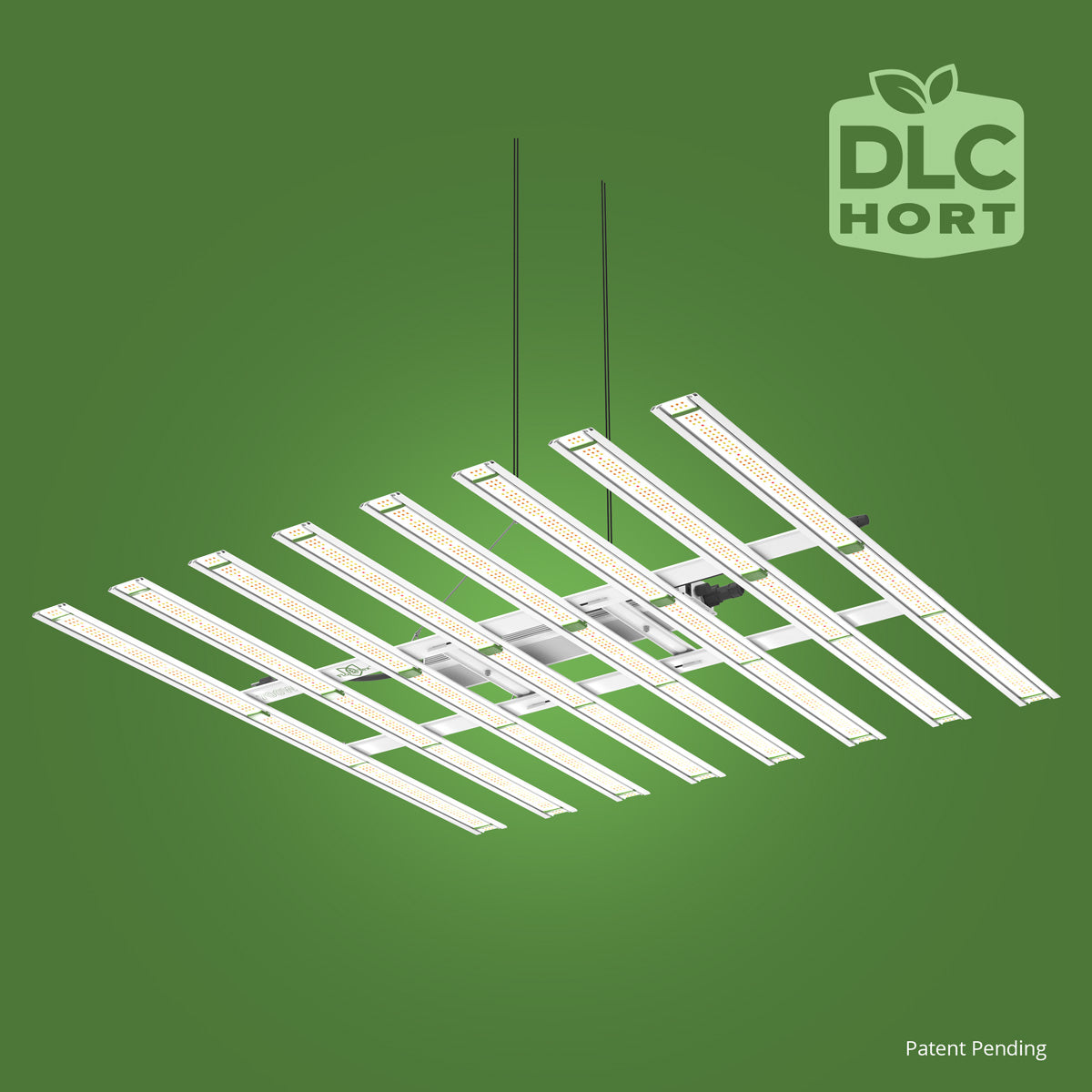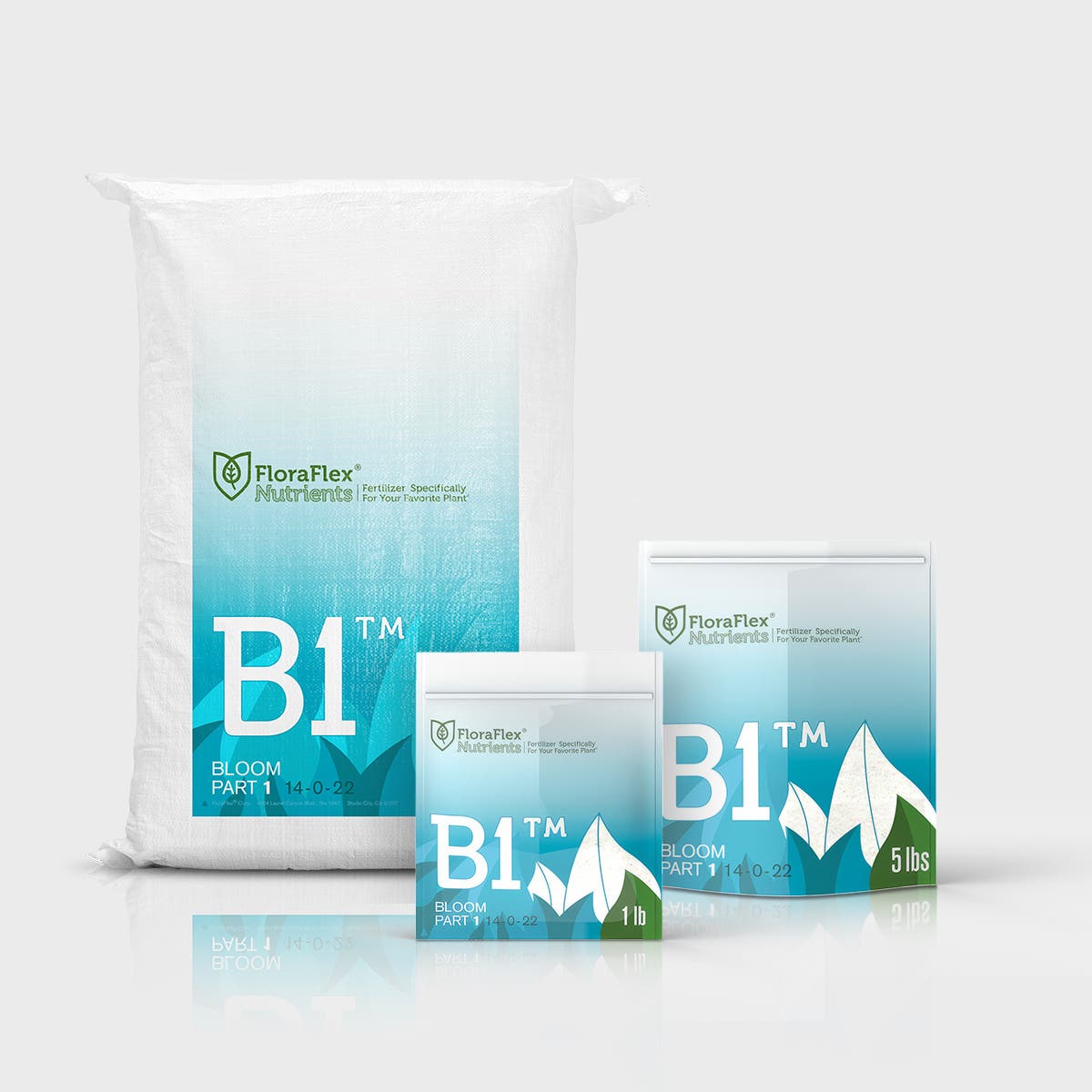Irrigation is the quiet lever behind canopy consistency, flower size, and finish times. Most yield losses trace back to five avoidable issues: poor measurement, uneven distribution, unmanaged salts, chronic saturation, and neglected water quality/maintenance. Here’s the short, practical playbook.
1) Guessing instead of measuring (pH, EC, and moisture)
Why it hurts: If you only check the reservoir, you miss what roots actually experience. pH drift locks out nutrients; high root-zone EC slows uptake; chronic saturation kills oxygen.
Do this instead
-
Log inflow & runoff pH/EC per zone (first and last irrigation of the day is enough).
-
Pick one substrate test method (pour-through, 1:2, or SME lab checks) and be consistent.
-
Track volumetric water content (VWC) or at least weigh pots to confirm dryback patterns.
Nice-to-have help: If you want a pH-stable baseline while you dial in meters, FloraFlex B1/B2 bloom combo is engineered for consistency in fertigation programs. Bloom Nutrients Combo.
2) Uneven distribution from clogged/mismatched emitters
Why it hurts: When some pots get 30% more solution than others, you’ve created two different feeding programs in the same zone—one overfed/overwatered, one starved.
Fast audit
-
Do a catch-cup/flow test on 12–20 emitters across the header.
-
If your low-quarter average flow is <80% of the zone average, fix the hardware.
Fixes that stick
-
Use pressure-compensating hardware and shorten long laterals where possible.
-
Replace underperforming emitters; schedule line flushes (see Mistake #5).
Helpful hardware: A compact manifold keeps outputs consistent—e.g., the Multi Flow Bubbler or QDPS Multi Flow Bubbler | T. Pair with the Quick Disconnect Pipe System for fast tear-downs and cleanouts.
3) Ignoring leaching fraction & runoff EC (salt management)
Why it hurts: As water leaves via transpiration, salts concentrate in the media. If runoff EC creeps above inflow EC and you never adjust, growth slows and tip burn follows.
Simple steering
-
Measure leaching fraction (LF) weekly: runoff ÷ applied volume.
-
Increase/decrease runtime or pulse count so runoff EC doesn’t trend upward day after day.
-
Use more, smaller pulses to hit your daily LF without drowning roots.
Helpful kit: Short, repeatable pulses are easy with Micro Drip—start with the Micro Drip Irrigation System or a ready bundle like the 12-Plant Micro Drip Kit (2-gal PotPro)
4) Overwatering & skipping drybacks (root hypoxia)
Why it hurts: Roots need oxygen; saturated media push out air, reduce respiration, and invite pathogens. Leaves can look “hungry” even with perfect EC because uptake is throttled.
Make it predictable
-
Engineer a daily dryback. Front-load irrigations during the first 60–70% of lights-on; finish early enough for fresh air exchange before dark.
-
Use more, smaller events to maintain oxygen while delivering the day’s liters.
-
Watch runoff EC trends; if EC climbs while pots stay wet, you’re stacking stress.
Helpful hardware: Containers with real drainage and airflow make drybacks easier—check the PotPro™ system and, for pinpoint delivery to the root zone, the 4-Way Micro Dripper Stake Assembly
5) Neglecting water quality & line maintenance
Why it hurts: High alkalinity pushes pH up; particulates and biofilm clog emitters; inconsistent pressure wrecks distribution uniformity.
Baseline program
-
Test source water each quarter (EC, alkalinity/bicarbonates, Na/Cl/Ca/Mg, Fe/Mn).
-
Filter and flush. Backflush filters on schedule; open line ends and purge fines.
-
Sanitize tanks/manifolds; verify injector ratios with a simple graduate test.
Helpful hardware: Inline filtration pays for itself—add a FloraFlex Disc Filter sized to your main and tie manifolds into a clean, modular header with the Quick Disconnect Pipe System.
Your compact irrigation SOP
Daily
-
Verify inflow pH/EC before first event; spot-check runoff pH/EC and % runoff on one pot per table/zone.
-
Confirm dryback (VWC trend or weight) and nudge pulse timing to keep the pattern.
Weekly
-
Flow-test a handful of emitters (head/middle/tail).
-
Review LF & runoff EC trends; adjust runtime/pulse count.
Monthly
-
Full-zone flush; log what you pull (biofilm vs fines).
-
Inspect/replace filters; sanitize tanks; confirm injector ratios.

